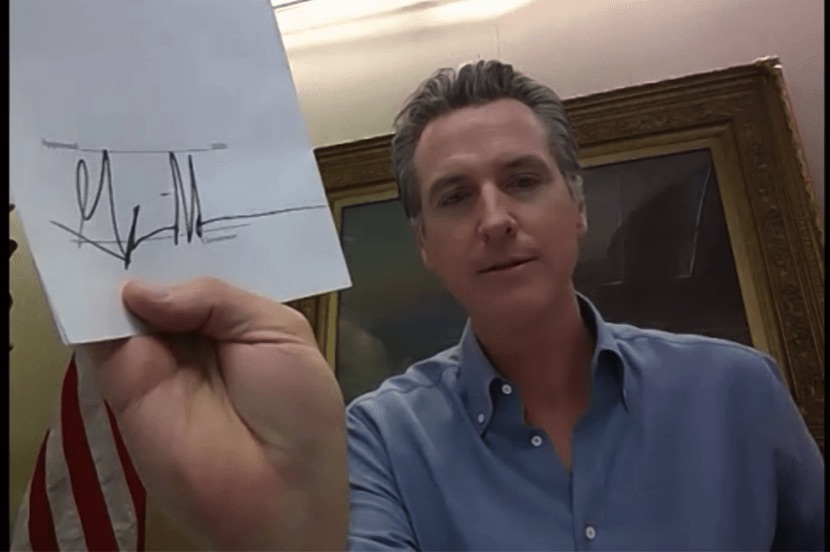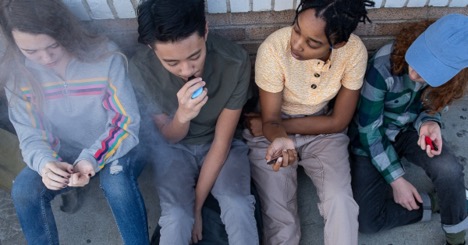
The respiratory risks of this unsettling time seem to multiply before our eyes. Coronavirus continues to spread and sicken thousands – yes, even teens.1 2 And this year’s wildfires caused extreme pollution.3 It’s important to remember, now more than ever, that vaping can weaken lung function. In fact a new study finds that vaping is associated with a greater likelihood of testing positive for COVID-19 in youth and young adults.4
In light of the current threats to lung health, a different industry might’ve risen to the occasion, publicized the urgent need for strong lung function, or at least warned the public about the connection of COVID-19 and smoking / vaping. But of course the tobacco industry didn’t do that. Instead they fought to keep flavors on the market, especially menthol.5 They failed to take responsibility and warn the public at a time when information can be the difference between life and death.
 Enter California lawmakers. Our own representatives have stepped up in the industry’s absence and passed a law to protect the health of our kids when it matters most.
Enter California lawmakers. Our own representatives have stepped up in the industry’s absence and passed a law to protect the health of our kids when it matters most.
The new law, SB 793, ends the sale of flavored tobacco in California, effective January 2021. Removing low-barrier access to menthol, cotton candy, and over 15,000 other tobacco flavors is a public health win.6 93% of youth who tried vaping started with a flavored product.7 That’s a lot of kids who might’ve avoided the addiction, lung damage,8 and emotional rewiring9 that tobacco can cause. Without flavors, the drug loses its appeal, sparing kids lung damage and other devastating impacts that can last their lifetimes.
It’s never a good idea for products that cause death and disease to feel cool in the throat or sweet on the tongue, but especially not now, when lung health is crucial.
Learn more about the law and extent of its protection.
—
Reference
- Young R, Hagan A. Doctors Are Warning Of A Potential Connection Between Vaping And Coronavirus Complications. WBUR. https://www.wbur.org/hereandnow/2020/03/26/vaping-coronavirus-complications. Published March 26, 2020. Accessed April 6, 2020.
- Edney A, LaVito A. Vaping Could Compound Health Risks Tied to Virus, FDA Says. Bloomberg. https://www.bloomberg.com/news/articles/2020-03-27/vaping-could-increase-health-risks-tied-to-covid-19-fda-says. Published March 27, 2020. Accessed April 6, 2020.
- Hawkins D, Schmidt S, Mufson S. Dense smoke smothers West Coast, shutting residents indoors and complicating fire response. The Washington Post. https://www.washingtonpost.com/nation/2020/09/13/dense-smoke-smothers-pacific-northwest-shutting-residents-indoors-complicating-fire-response. Published September 13, 2020. Accessed September 30, 2020.
- Gaiha SM, Cheng J, Halpern-Felsher B. Association Between Youth Smoking, Electronic Cigarette Use, and COVID-19. J Adolesc Health. 2020;67(4):519-523. doi:10.1016/j.jadohealth.2020.07.002
- California’s Ban on the Sale of Flavored Tobacco Products – Counter Tobacco. https://countertobacco.org/an-update-on-californias-ban-on-flavored-tobacco-products/. Accessed October 14, 2020.
- Hsu G, Sun JY, Zhu SH. Evolution of Electronic Cigarette Brands From 2013-2014 to 2016-2017: Analysis of Brand Websites. J Med Internet Res. 2018;20(3):e80. Published 2018 Mar 12. doi:10.2196/jmir.8550
- Rostron BL, Cheng YC, Gardner LD, Ambrose BK. Prevalence and reasons for use of flavored cigars and ends among US youth and adults: Estimates from wave 4 of the PATH study, 2016-2017. Am J Health Behav. 2020;44(1):76-81. doi:10.5993/AJHB.44.1.8
- Gotts JE, Jordt SE, McConnell R, Tarran R. What are the respiratory effects of e-cigarettes? BMJ. 2019;366. doi:10.1136/bmj.l5275
- Becker B, Hurlemann R. Unraveling the role of the amygdala in nicotine addiction. In: Preedy V, editor. Neuropathology of drug addictions and substance misuse.Cambridge (MA): Academic Press; 2016: 272-81.







